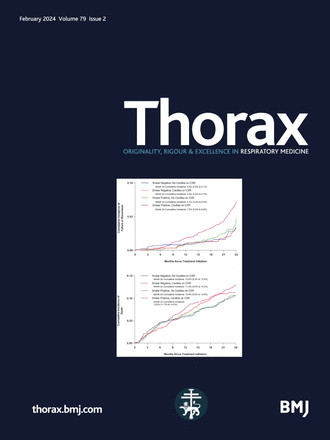Strengthening the evidence base to support stronger regulation of social media based advertising of e-cigarette products to youth
IF 9
1区 医学
Q1 RESPIRATORY SYSTEM
引用次数: 0
Abstract
Despite the early promise of e-cigarettes as a potential smoking cessation tool, the actual uptake of these products has been the source of much controversy. There have been growing concerns about the exponential rise in the use of e-cigarettes and vaping products among youth and adolescents, with the proportion of those aged 11–15, 16–17 and 18 years in Great Britain using e-cigarettes more than doubling between 2021 and 2023 to reach 4.6%, 15.0% and 18%, respectively.1 The 2023 US Annual National Youth Tobacco Survey has reported more than 2.1 million current e-cigarette users in the US, with 25% being daily users.2 E-cigarettes represent the most popular tobacco products among American youth for the 10th year in a row, feeding growing concerns from public health agencies worldwide about the potential health effects of e-cigarettes in this vulnerable demographic. In an era when direct tobacco advertising targeting youth has long been banned and strict regulation has led to smoking combustible cigarettes going largely out of fashion among youth,3–5 this begs the question: why are e-cigarettes so popular in this demographic? Aside from the obvious factors related to the fact that nicotine is addictive and e-cigarettes are discreet, cheap and easy to obtain, the answer may lie in the subtle and creative ways e-cigarette manufacturers have …加强证据基础,支持加强对电子烟产品社交媒体广告的监管
尽管电子烟作为一种潜在的戒烟工具早有前景,但这些产品的实际使用情况却一直备受争议。越来越多的人开始关注青少年使用电子烟和吸食电子烟产品的指数级增长,在英国,11-15 岁、16-17 岁和 18 岁的青少年使用电子烟的比例在 2021 年至 2023 年期间将翻一番多,分别达到 4.6%、15.0% 和 18%1 。美国 2023 年度全国青少年烟草调查报告显示,美国目前有 210 多万电子烟用户,其中 25% 是日常用户。2 电子烟已连续 10 年成为美国青少年中最受欢迎的烟草产品,这也加剧了全球公共卫生机构对电子烟对这一弱势群体潜在健康影响的担忧。在直接针对青少年的烟草广告早已被禁止、严格的监管已导致吸食可燃卷烟在青少年中基本不再流行的时代3-5,这不禁让人产生疑问:为什么电子烟在这一人群中如此流行?除了尼古丁会上瘾和电子烟隐蔽、廉价、容易获得等显而易见的因素外,答案可能还在于电子烟制造商们巧妙而富有创造性的方式......
本文章由计算机程序翻译,如有差异,请以英文原文为准。
求助全文
约1分钟内获得全文
求助全文
来源期刊

Thorax
医学-呼吸系统
CiteScore
16.10
自引率
2.00%
发文量
197
审稿时长
1 months
期刊介绍:
Thorax stands as one of the premier respiratory medicine journals globally, featuring clinical and experimental research articles spanning respiratory medicine, pediatrics, immunology, pharmacology, pathology, and surgery. The journal's mission is to publish noteworthy advancements in scientific understanding that are poised to influence clinical practice significantly. This encompasses articles delving into basic and translational mechanisms applicable to clinical material, covering areas such as cell and molecular biology, genetics, epidemiology, and immunology.
 求助内容:
求助内容: 应助结果提醒方式:
应助结果提醒方式:


